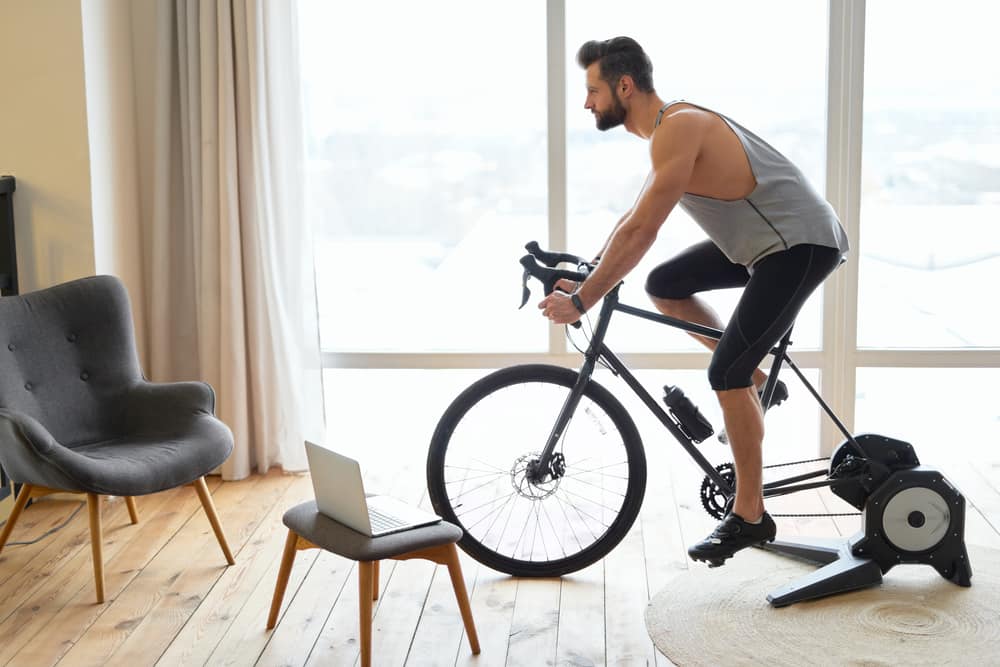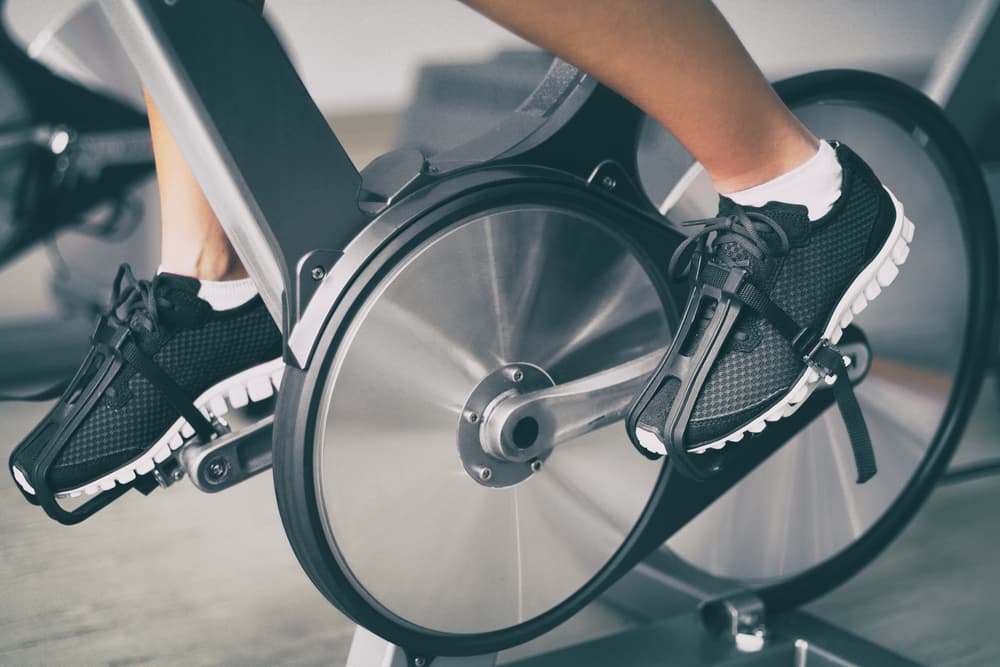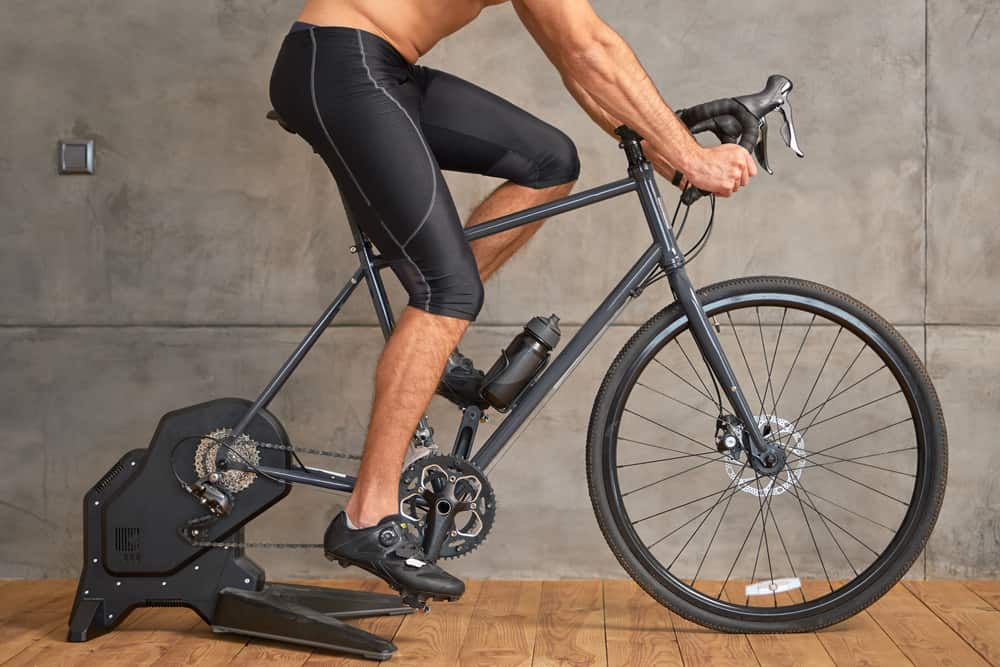Indoor cycling bikes have several features that affect your workout experience. Their drive system is one example. When it comes to a chain or a belt-driven exercise bike comparison, which one should you choose?
A belt-drive bike is better if you prefer smoother, quiet rides on a low-maintenance machine. However, it won’t give you the natural riding experience that a chain-driven bike would.
Each drive system has its share of pros and cons. And in the end, the choice boils down to your preference.
So, let’s differentiate the two and see which drive system suits you best.
What is a Bike Drive System?
First things first: what does a drive system do, and how does it work?
The drive system is the bike mechanism that connects the flywheel and pedals.
It’s the part that lets you pedal forward and get a good cardio workout. There are two kinds: the chain and the belt drive systems.
Both have the same purpose, but they give different outputs to riders.
Understanding their differences can help you find the indoor bike that meets your preferred indoor cycling experience.
Chain and Belt-Driven Exercise Bike Comparison
Chain-drive system bikes have metal links that rotate over the wheel sprockets as you step on the pedals.
Indoor exercise bicycles with a front flywheel typically have this drive mechanism.
The rotating chains create a familiar clinking sound that adds to the ride quality. Most bike models with this drive mechanism include a chain guard.
This add-on feature muffles the noise the chain makes so that you can enjoy quieter cycling sessions.
A chain-driven bike has a single gear level and works with a friction resistance-based system.
Experienced cyclists are likely to choose chain over belt drives as chain drives perform similarly to outdoor or mountain bikes.
On the other hand, the belt-drive system bikes have toothed rubber belts made from polyurethane or carbon fibre. Usually, these bikes work with magnetic resistance.
The teeth of the belt fit around the flywheel and pedals, making them turn and work together.
This drive type is similar to systems found in motorcycles and cars. People who like a smoother and quieter ride quality would likely prefer this one.

What is the Difference Between Chain and Belt-Driven Exercise Bikes?
For easier comparison, I identified specific features and buying factors you’ll likely encounter in a chain and belt-driven exercise bike.
Here’s a summary table for a quick read, but do scroll down further for a detailed explanation.
| FEATURES | CHAIN-DRIVEN BIKES | BELT-DRIVEN BIKES |
| Performance | More natural outdoor biking sound and feel | Smooth ride but can give an ineffective workout perception |
| Workout Benefits | Helps with weight loss and cardiovascular health | Helps with weight loss and cardiovascular health |
| Noise Level | Generate clinking sounds; may require a chain guard to lessen noise | Virtually quiet; ideal for tiny homes or apartments |
| Maintenance | Require chain lubrication, retightening or replacement | Require lower maintenance, but replacement belts may need installation assistance |
| Cost | More affordable | More expensive |
Performance
In comparison to its belt-driven counterpart, a chain-drive exercise bike can simulate road cycling better.
The feel and sound of chain-driven bicycles are more natural, which enhances some users’ workouts.
Others may find the smooth-riding effect of belt-driven bikes strange. Specifically, it can make riders feel they are not getting the same power-packed performance and results.
However, you can use a chain or belt-driven exercise bike for a good workout, and the health effects and benefits you get will be the same for both.
So, if your reason for cycling indoors is to lose weight or boost cardio strength, you’ll achieve either goal no matter the drive system of your equipment.
Noise Level
A belt-driven exercise bike is a better choice for someone living in an apartment. That’s because this type produces little to no sound.
The belt smoothly rotates over the flywheel system as you pedal, creating virtually no noise.
With this system, it will be easier for you to work out at any time, even when the rest of the household is asleep or resting.
Chain drives are not loud, but you will surely hear the clinking sound while pedalling.
Still, you will have no problem conversing or watching TV while working out with this gym equipment. A chain guard should help tone down the rotating chain sound while giving you a natural cycling experience.
Check out these other tips to keep your exercise bike quiet.

Maintenance
The chain of a stationary bicycle constantly moves while you work out. Over time, the pressure and friction can wear the metal out.
You can fix this, but chain tightening at regular intervals may not be everyone’s cup of tea.
Lubricating the metal chain can be messy, too. At times, chain-drive systems may also snap and require replacement.
So, in comparison to a chain-drive exercise bike, a belt-driven model requires lower maintenance, which helps preserve belt quality. The belt also glides smoothly on the flywheel, causing little to no damage due to friction.
Belts for indoor cycling bikes can also break, especially when installed incorrectly.
Replacements are not expensive, but replacing a broken belt is harder than tightening a chain. You might need a technician to install a new one for you.
Whichever drive system you choose, regular maintenance is still essential.
Cost
Affordable chain and belt-driven units are available for budget-conscious riders.
However, a belt-driven exercise bike is more modern and has newer features, making it usually more expensive. The precision needed in a belt-drive mechanism also adds to the cost.
Specifically, belt-drive manufacturers need to accurately measure the belt for each unit to make it work and last long.
Quieter bikes are also more in demand, which naturally increases the price.
Chain-driven bicycles have a more reasonable price because the chain system is cheaper to make. They do not require exact chain measurements since users should retighten at regular intervals.
The cost of exercise bikes also depends on their type and features. You can learn more about their different price categories here.
Final Thoughts on Chain and Belt-Driven Exercise Bikes
Using a chain or belt-driven exercise bike does not affect your workout results.
Both can boost your heart rate, get you into shape, and maintain your healthy weight.
However, a closer comparison of the chain and belt-driven exercise bikes shows that they differ in cycling experience, noise level, maintenance needs, and cost.
The choice boils down to your personal preference. Choose a belt-drive bicycle if you prefer a smoother, quieter, low-maintenance machine. Get a chain-drive exercise bike for a more affordable and natural cycling experience.
Read my exercise bike reviews and buying guide to help you with your choice.

Questions on Exercise Bike Features
1. How do I adjust the drive belt of a NordicTrack bike?
The NordicTrack website has an easy-to-follow instructional video on how to retighten the drive belt of your indoor bicycle. Check out these common FAQs for NordicTrack bikes for more information.
2. How should I choose an exercise bike to avoid wasting money?
Choose an exercise bike with a set of extra features that you will use. Also, a machine that ensures a comfortable ride is crucial to making the most of your investment. So, look for an indoor bicycle with an adjustable seat or handlebar and the proper weight limit to keep you stable. Noise level and space requirements are worth checking out, too.
3. Does evaluating exercise bike flywheel weights matter?
If the overall feel of your cycling workout is essential to you, then yes, evaluating exercise bike flywheel weights matters. It is because this component indicates how easy or hard it is for the bike to build and maintain momentum. You’ll want to use an exercise bike with the correct flywheel weight if you prefer smooth and comfortable cycling sessions. The flywheel weight should also match your fitness level.
- Foldable vs Traditional Reformers: Which One’s Right for You? - 2 July 2025
- Elliptical Cross Trainer vs Exercise Bike: Which is Better? - 24 June 2025
- How Do the Different Massage Gun Attachments Work? - 23 June 2025
